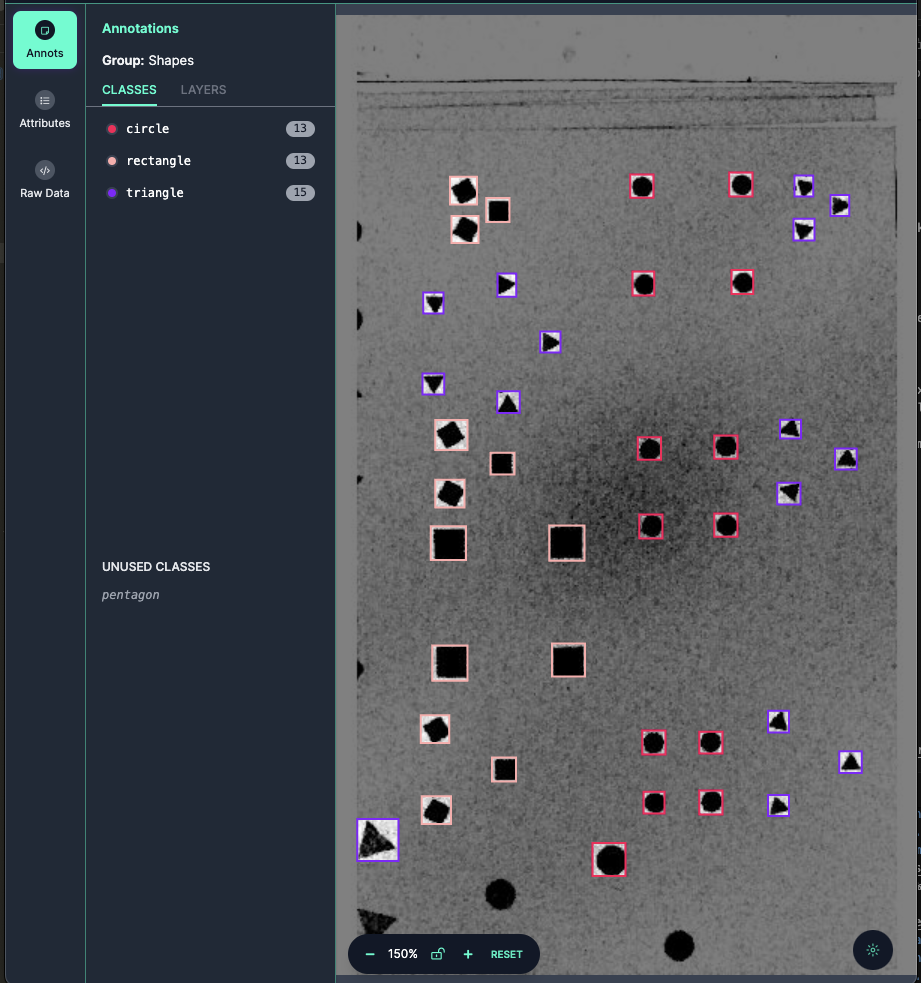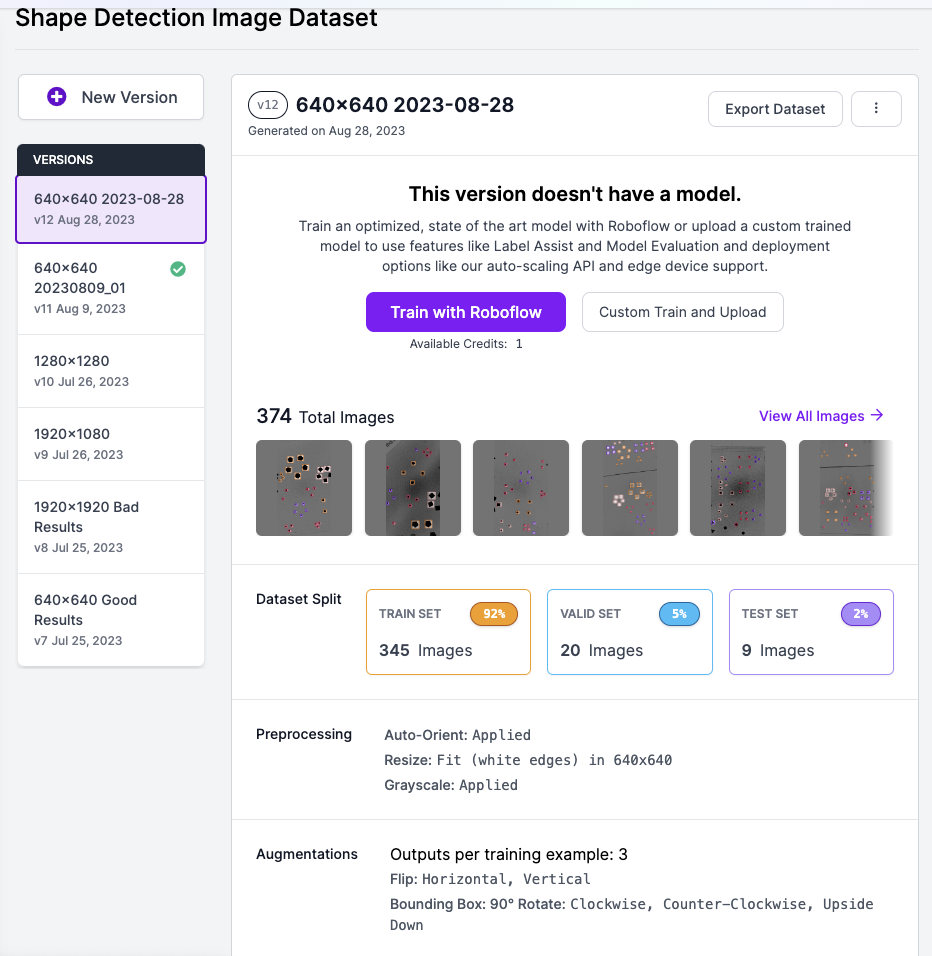Machine Learning - Shape Detection
Prepare Dataset - Roboflow
Data labeling and augmentation were performed using Roboflow’s Web-Based Image Data Labeling feature and Data Augmentation functionality.
- Data Labeling
The Web-Based Data Labeling interface of Roboflow.

- Data Augmentation
Using the Data Augmentation, the size of DataSet can be increased by 3 to 10 times.

Training
iOS - yolov8
As of mid-2023, yolov8 was considered the most suitable model for real-time object detection.
- Install Python
https://www.python.org/downloads/windows/
-
ensurepip
Python comes with an ensurepip module[1], which can install pip in a Python environment.
PS Y:\AI_ML> py -m ensurepip –upgrade
More details about how ensurepip works and how it can be used, is available in the standard library documentation.
- pip
PS Y:\AI_ML> py -m pip install –upgrade pip
- Install PyTorch with CUDA 12.1 Support
PS Y:\AI_ML> pip3 install –pre torch torchvision torchaudio –index-url https://download.pytorch.org/whl/nightly/cu121
- Train : device=0 for GPU
PS Y:\AI_ML\ShapeDetection\Train_Test01> yolo task=detect mode=train model=yolov8s.pt data=./data.yaml device=0 epochs=100 imgsz=640
- Test Prediction
PS Y:\AI_ML\ShapeDetection> yolo detect predict model=Y:\AI_ML\ShapeDetection\Train_Test01\runs\detect\train2\weights\best.pt source=Y:\AI_ML\ShapeDetection\ShapeData1*.JPG
- Install Core ML Tools V7.0b1 ->
-> Problem: in case “nms=True” got error => CoreML: export failure 86.3s: ‘NoneType’ object is not callable
PS Y:\AI_ML\ShapeDetection> pip install coremltools==7.0b1
-
Convert .pt to .mlmodel : Edit and run conv_pt2coreml.py
from ultralytics import YOLO model=YOLO('ShapeDetectionM300_1280_01.pt') model.export(format='coreml',nms=True)
Android - Tensorflow Lite / MobileNetV2_320
Tensorflow Lite Library with the MobileNetV2 Model is the most suitable for the Object Detection App of Android devices.
-
Traning and model conversion had been done on Google Colab using Colab Notebook below.
Colab Notebook - MobileNetV2_TFLite2_ObjectDetection
When exporting the model to a TF Lite file without specifying the maximum number of recognitions, the number of detections is limited to 10. Therefore, it is essential to include the following option: (100 or the desired maximum number of recognitions).
–max_detections 100
# Make a directory to store the trained TFLite model #!mkdir /content/drive/MyDrive/mobilenetv2_320/custom_model_lite2 colab_project_folder = '/content/drive/MyDrive/colab03' output_directory = '/content/drive/MyDrive/mobilenetv2_320/custom_model_lite2' # Path to training directory (the conversion script automatically chooses the highest checkpoint file) last_model_path = '/content/drive/MyDrive/mobilenetv2_320/training' !python {colab_project_folder}/models/research/object_detection/export_tflite_graph_tf2.py \ --trained_checkpoint_dir {last_model_path} \ --output_directory {output_directory} \ --max_detections 100 \ --pipeline_config_path {pipeline_file} -
TF Lite Quantization
Convert the exported TF Lite file to a float16 quantization file.
import tensorflow as tf converter = tf.lite.TFLiteConverter.from_saved_model(saved_model_dir) converter.optimizations = [tf.lite.Optimize.DEFAULT] converter.target_spec.supported_types = [tf.float16] conv_result = converter.convert() with open(tflite_model_dir + '/float16_quant.tflite', 'wb') as f: f.write(conv_result)